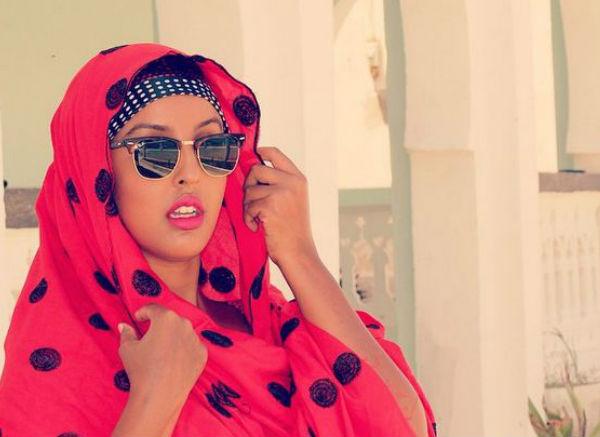
Thursday, August 13, 2015

How my Instagram pictures from inside Somalia are helping to filter out damaging stereotypes.Despite the fears of friends and family, I moved to Mogadishu to meet my mother in 2014 - and found a country contrary to all my expectations
I’m a Canadian national currently living and working in Mogadishu, Somalia. Though an eyebrow-raising choice of residence, I decided to move to Mogadishu last year to settle accounts with matters of the heart. When a gruesome Civil War toppled the then Somali government in 1991, my grandmother and I moved to Toronto, Canada, to reunite with my father, leaving my mother behind. Then, in August 2014, I went to Somalia to properly meet my mother for the first time.
How did a functionally Canadian girl suddenly up sticks and move to a country so mired in controversy? It began with a conversation in late 2013 with an uncle who had just returned from the region. He told me the country as a whole looked promising and was making a praiseworthy turnabout. If there was ever a window of opportunity for me to see my mother, he added, the time was now. A few months later, I was boarding the plane.
I had a jovial, carefree upbringing in Toronto. I was a bighearted nerd, an honour roll student and the first in my immigrant family to be accepted to and attend university in Canada. I grew up believing in Canadian values: hard work, equality and freedom. And though life in Somalia differs from that in Canada drastically - I miss the convenience of a laundry machine! - life is somehow recognisably the same as well. Humans are very adaptable, so the adjustments I’ve had to make have felt minor. Even so, they’re noticeable: I now wear long-sleeved, robe-like dresses over my Canadian T-shirts and jeans, cover my head daily and sit segregated from men on public transport, in concert halls, stadiums and other public events.
These traditions may seem alien to many westerners, but there is also a lot of familiarity. Fathers in the country now proudly send their young daughters to school, while husbands are happy for their wives to work alongside men. Women are respected, with some very powerful in the business and political scenes; I work as a civil servant. My Canadian values feel perfectly in step with the Somali ones that I experience in my new home.
Initially, I turned to Instagram to reassure my friends and family strewn across the globe of my safety, and that – even to my own surprise – I was having fun. Initially I uploaded satirical videos of statements made (in character) by a Somali mother on various issues inspired by the book Shit My Dad Says, merely to entertain my friends. But it turned out that interest in Somali culture was a lot higher than I’d ever imagined: people showed their friends, relatives and neighbours, and my following took off.
In addition to the videos, I began uploading aesthetically beautiful photographs - exquisite ruins amid newly polished arches, Eid celebrations on the white sand beaches alongside AMISOM soldiers searching mosque-goers in the sunshine – in an effort to tell a haunting, unforgettable story about how life goes on. I didn’t (and still can’t) take pictures of people because they’re not so forthcoming, and I think a lot of that is due to the sensitive nature of security in Somal
ia. I didn’t deliberately set out to challenge the global perception of Somalia, but I recognise that Africa is misrepresented and underrepresented in global media because her story is largely told by non-Africans who have never lived in the continent. The impact that my Instagram has had is to open up a narrative and to ignite a debate which desperately needed having.
In addition to humour, I wanted to add scholarship to the ethnography of the Somalis. There’s a huge cultural gap between Somali-born parents and their western-born or raised children, one that I felt I had a crucial insight into because of my own background.
My relationship with my grandmother in particular, like that of Natenska and her traditionally-minded grandmother in Dostoyevsky’s White Nights, is one as rich with similarities in outlook as difference. It came naturally to me to share what I knew to be true about Somali customs and culture, and to present it in a humorous and accessible way, while remaining true to my family’s values.
More than anything, I wanted to show young transnational Somalis that their homeland was beautiful. Instagram was the obvious outlet. Yes, there is a poverty-stricken Somalia; yes, there is a Somalia that’s struggling; but that story has been told over and over and over ag
ain. It’s about time we talk about the Somalia where a certain hotelier imported a $40,000 oven from Italy so their hotel’s restaurant could serve world class meals; the Somalia that’s moved from humanitarian needs to developmental needs in terms of aid and is working towards sustaining itself through innovative ideas; the Somalia that has the longest coastline in Africa, punctuated with staggeringly magnificent beaches. It’s time we diversified the narrative – and, in some small way, I’m proud to be a part of that effort.